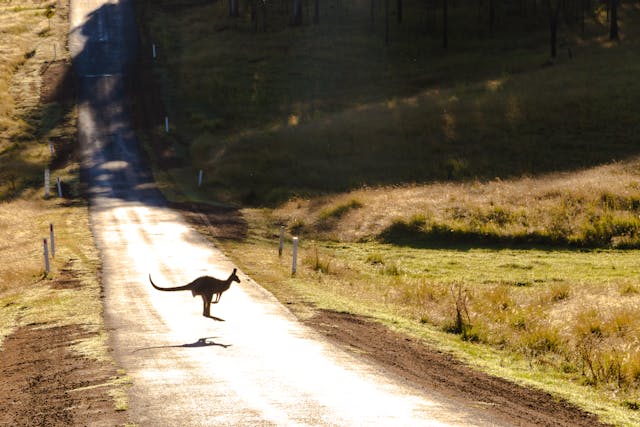
Why did people think Australia was there? They believed that the continents in the northern hemisphere and the southern hemisphere should balance each other out.
In this question, I am talking about Europeans, particularly the British people, who would go on to colonize the island and subjugate the people that lived there. The aboriginal people of Australia first arrived there 50,000 years ago and they had no doubt that Australia was there because they were living on it. 50,000 years ago is not too long after the first humans came out of Africa. They headed in different directions, and some of them headed across southern Asia. When they reached the south of Australia, they used boats to explore the island chains that are there and continually island hopped further and further south. They did have to take some very long boat rides and their navigation skills were very important, but more of the islands were joined by land than is currently the case. Sea levels were much lower than they are today and there were many land bridges. Particularly, Papua New Guinea and northern Australia were connected by land. The Aboriginal people could slowly move down until they were in Australia and then they spread out around the country. Later, sea levels rose and the land bridges disappeared, cutting them off.
Fast forward about 50,000 years and European sailors and explorers have discovered most of the countries in the northern hemisphere. Known as the “Age of Discovery”, it started in 1336 when Portuguese sailors headed to the Canary Islands, which are off the northwest coast of Africa and not that far from Portugal. They followed that up by discovering Madeira and the Azores, which are close to the middle of the Atlantic Ocean. The Portuguese explorer Vasco da Gama found a route to India and Portugal realized there was a lot of money to be made from finding new countries and trading what they found. At the same time, shipbuilding technology was improving and longer distances were becoming possible. Christopher Columbus sailed to South America in 1492 (although he swore to his dying day that it was India), and Ferdinand Magellan circumnavigated the globe in 1522 (although he technically died before the end). By the end of the 16th century, all of the continents in the northern hemisphere had been found and by the end of the 17th century, large sections of them had been mapped out.
So, why did people think Australia was there? They had traveled most of the way down South America and experts at the time believed that there must be a huge landmass somewhere below Asia so that all of the landmasses were balanced out. There is no reason why the landmasses need to be balanced out and for long periods of Earth’s history, they have been squashed together, but that is what people thought. They named this unknown land Terra Australis Incognita, which means “Unknown Southern Land” in Latin and is where the name for Australia came from. Finding it wasn’t going to be easy as sailing out into the unknown takes a lot of money and a lot of courage.
The idea of a southern continent had existed for thousands of years. The Greeks believed there to be one and there are some theories that they sailed to it. Diodorus Siculus set sail from Africa. He was heading for India, but he sailed off course and he reached an unknown land. This could have been the west coast of Australia, but it could also have been Sri Lanka, Java, or many other countries. The Romans also had stories of this far southern land, but it is unknown if they reached it. Lucian of Samosata wrote of a distant land inhabited by savages, where the young of animals are carried in pouches. This could be kangaroos, or it could be something else that we are just reading into. And Australia was certainly visited by various people from Asian countries, so maybe he just heard about kangaroos.
Finally, in 1642, Abel Tasman was commissioned to lead a voyage into the Southern Pacific Ocean. He discovered Tasmania and New Zealand, but not Australia. Although, now knowing that there was land out there, more people set out and the future of Australia was set. And this is what I learned today.
Photo by Sabel Blanco: https://www.pexels.com/photo/photo-of-a-kangaroo-on-road-2615031/
Sources
https://www.australiaforeveryone.com.au/files/maritime-greeks.html
https://en.wikipedia.org/wiki/European_exploration_of_Australia
https://www.unsw.edu.au/newsroom/news/2018/08/when-did-aboriginal-people-first-arrive-australia
https://www.nationalgeographic.com/culture/article/aboriginal-australians
https://en.wikipedia.org/wiki/Age_of_Discovery
https://en.wikipedia.org/wiki/Exploration_of_North_America
https://archive.nytimes.com/www.nytimes.com/books/first/l/lewis-myth.html
https://www.joh.cam.ac.uk/library/library_exhibitions/schoolresources/exploration/southerncontinent
